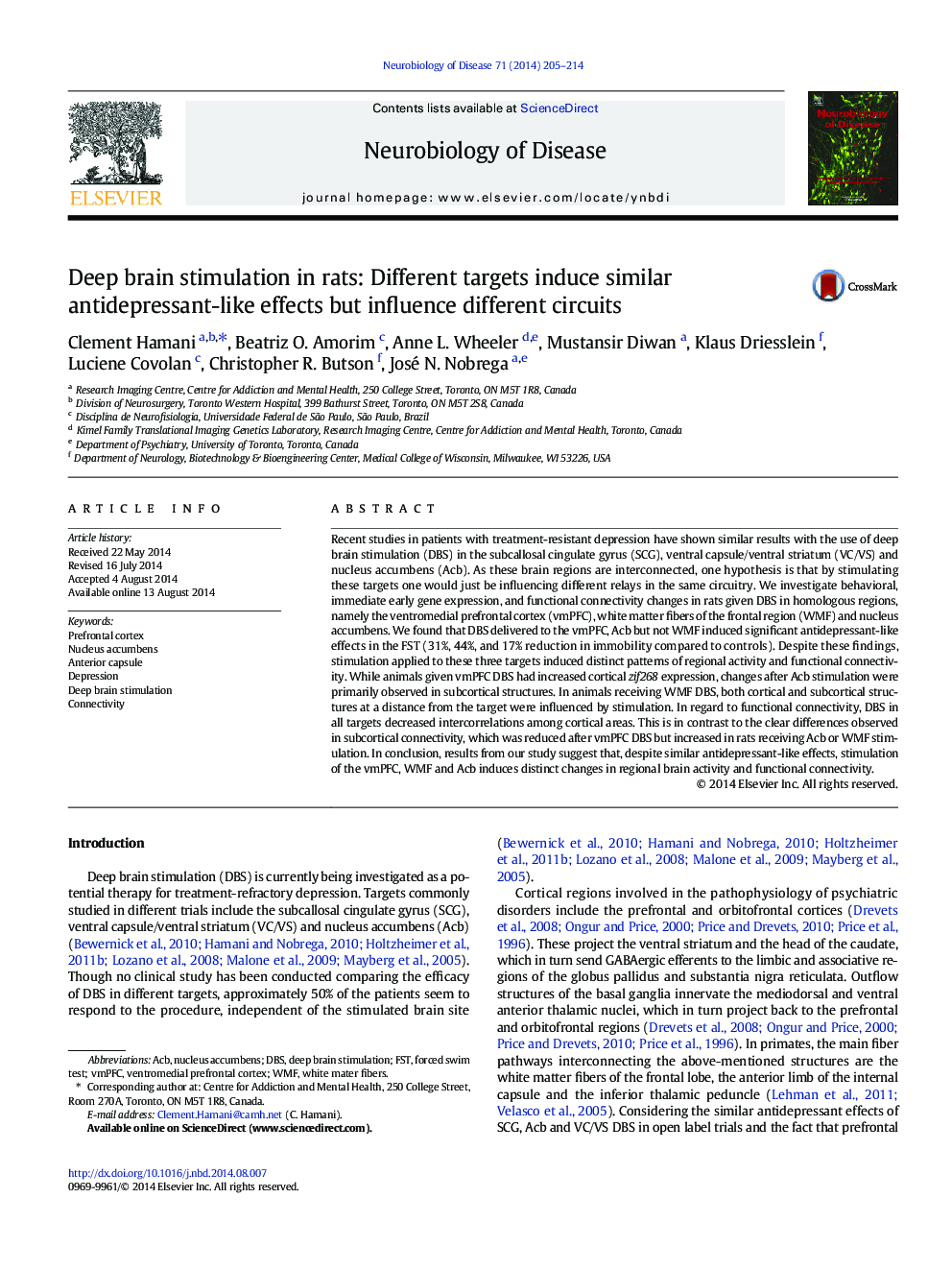| Article ID | Journal | Published Year | Pages | File Type |
|---|---|---|---|---|
| 6021813 | Neurobiology of Disease | 2014 | 10 Pages |
Abstract
Recent studies in patients with treatment-resistant depression have shown similar results with the use of deep brain stimulation (DBS) in the subcallosal cingulate gyrus (SCG), ventral capsule/ventral striatum (VC/VS) and nucleus accumbens (Acb). As these brain regions are interconnected, one hypothesis is that by stimulating these targets one would just be influencing different relays in the same circuitry. We investigate behavioral, immediate early gene expression, and functional connectivity changes in rats given DBS in homologous regions, namely the ventromedial prefrontal cortex (vmPFC), white matter fibers of the frontal region (WMF) and nucleus accumbens. We found that DBS delivered to the vmPFC, Acb but not WMF induced significant antidepressant-like effects in the FST (31%, 44%, and 17% reduction in immobility compared to controls). Despite these findings, stimulation applied to these three targets induced distinct patterns of regional activity and functional connectivity. While animals given vmPFC DBS had increased cortical zif268 expression, changes after Acb stimulation were primarily observed in subcortical structures. In animals receiving WMF DBS, both cortical and subcortical structures at a distance from the target were influenced by stimulation. In regard to functional connectivity, DBS in all targets decreased intercorrelations among cortical areas. This is in contrast to the clear differences observed in subcortical connectivity, which was reduced after vmPFC DBS but increased in rats receiving Acb or WMF stimulation. In conclusion, results from our study suggest that, despite similar antidepressant-like effects, stimulation of the vmPFC, WMF and Acb induces distinct changes in regional brain activity and functional connectivity.
Keywords
Related Topics
Life Sciences
Neuroscience
Neurology
Authors
Clement Hamani, Beatriz O. Amorim, Anne L. Wheeler, Mustansir Diwan, Klaus Driesslein, Luciene Covolan, Christopher R. Butson, José N. Nobrega,
